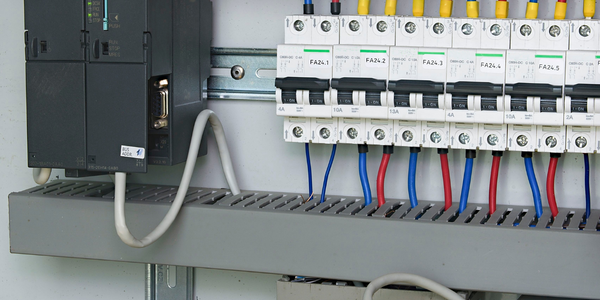Customer Company Size
Large Corporate
Country
- United States
Product
- Aravo Supplier Lifecycle Management Solution
Tech Stack
- Software-as-a-Service (SaaS)
Implementation Scale
- Enterprise-wide Deployment
Impact Metrics
- Cost Savings
- Productivity Improvements
Technology Category
- Platform as a Service (PaaS) - Application Development Platforms
Applicable Industries
- Electronics
Applicable Functions
- Procurement
Use Cases
- Supply Chain Visibility
- Inventory Management
Services
- Cloud Planning, Design & Implementation Services
About The Customer
General Electric (GE) is a diversified global infrastructure serving customers in more than one hundred countries and employing more than 300,000 people worldwide. The company is plugged into businesses that have shaped the modern world, with revenues in excess of $150B. From turbines to TV, from household appliances to power plants, GE has a wide range of products and services. The company has an enterprise-wide, global deployment with languages including English, French, Spanish, German, Japanese, and Chinese.
The Challenge
GE faced a complex challenge of managing over 700,000 global suppliers due to the highly complex supply chain. The vendor master in disparate systems lacked schema hierarchies, supplier certifications, compliance data, and contracts. There was rapid vendor proliferation without appropriate controls and a lack of spend visibility across the enterprise due to inaccurate supplier information and categorization processes. The company needed a solution that could provide a single globally-deployed vendor master management solution that creates one “source of truth” for suppliers across the entire organization.
The Solution
GE implemented the Aravo Supplier Lifecycle Management Solution. Aravo SLM is a Software-as-a-Service (SaaS) platform that enables enterprises like GE to automate and manage global supplier lifecycle processes to increase efficiencies in supplier management, improve supplier data quality, reduce costs, and enhance their ability to negotiate better terms with suppliers. GE is now live on Aravo SLM with 700,000 suppliers under management in six languages. Aravo SLM will continue to be rolled out to users globally and adopted by new business units during the remainder of 2011. Aravo SLM is delivered on a highly configurable SaaS platform, which enabled rapid deployment at GE despite extremely complex data types, business requirements, and processes.
Operational Impact
Quantitative Benefit

Case Study missing?
Start adding your own!
Register with your work email and create a new case study profile for your business.
Related Case Studies.

Case Study
Remote Temperature Monitoring of Perishable Goods Saves Money
RMONI was facing temperature monitoring challenges in a cold chain business. A cold chain must be established and maintained to ensure goods have been properly refrigerated during every step of the process, making temperature monitoring a critical business function. Manual registration practice can be very costly, labor intensive and prone to mistakes.

Case Study
Predictive maintenance in Schneider Electric
Schneider Electric Le Vaudreuil factory in France is recognized by the World Economic Forum as one of the world’s top nine most advanced “lighthouse” sites, applying Fourth Industrial Revolution technologies at large scale. It was experiencing machine-health and unplanned downtime issues on a critical machine within their manufacturing process. They were looking for a solution that could easily leverage existing machine data feeds, be used by machine operators without requiring complex setup or extensive training, and with a fast return on investment.

Case Study
Cloud Solution for Energy Management Platform-Schneider Electric
Schneider Electric required a cloud solution for its energy management platform to manage high computational operations, which were essential for catering to client requirements. As the business involves storage and analysis of huge amounts of data, the company also needed a convenient and scalable storage solution to facilitate operations efficiently.

Case Study
Leveraging the IoT to Gain a Competitive Edge in International Competition
Many large manufacturers in and outside Japan are competing for larger market share in the same space, expecting a growing demand for projectors in the areas of entertainment, which requires glamor and strong visual performance as well as digital signage that can attract people’s attention. “It is becoming more and more difficult to differentiate ourselves with stand-alone hardware products,” says Kazuyuki Kitagawa, Director of Service & Support at Panasonic AVC Networks. “In order for Panasonic to grow market share and overall business, it is essential for us to develop solutions that deliver significant added value.” Panasonic believes projection failure and quality deterioration should never happen. This is what and has driven them to make their projectors IoT-enabled. More specifically, Panasonic has developed a system that collects data from projectors, visualizes detailed operational statuses, and predicts issues and address them before failure occurs. Their projectors are embedded with a variety of sensors that measure power supply, voltage, video input/ output signals, intake/exhaust air temperatures, cooling fan operations, and light bulb operating time. These sensors have been used to make the projector more intelligent, automatically suspending operation when the temperature rises excessively, and automatically switching light bulbs. Although this was a great first step, Panasonic projectors were still not equipped with any capability to send the data over a network.









